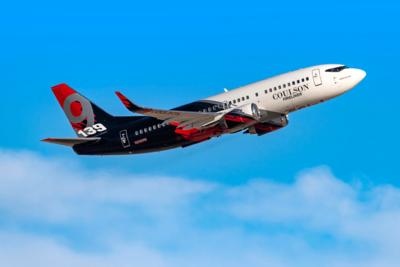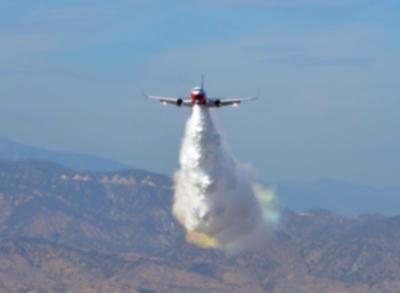Pilots Emerge from Burning Wreckage with Minor Injuries
On 6 February 2023, a Boeing 737-3H4 aerial tanker owned by New South Wales-based Coulson Aviation—a company specializing in the provision of aircraft and aircrews for aerial firefighting, intelligence, emergency personnel/cargo transport, and industrial heavy-lift operations—went down in the Great Southern Region of Western Australia’s Fitzgerald River National Park while fighting multiple fires.

The aircraft’s sole occupants—its two pilots—survived the harrowing accident and were transported to hospital with minor injuries. The instance occasions the first hull loss of a Boeing 737 on the Australian continent.
The aircraft departed Busselton Margaret River Airport (BQB) at 12:08 AWST (Australian Western Standard Time/UTC+8) on the first of three planned missions to fight wildfires burning in the vicinity of Hopetoun—a coastal town some 319-nautical-miles south-east of Perth, Western Australia’s capital city.
En-route to the fires, the 737 climbed to FL290 before descending to approximately seven-hundred-feet for purpose of discharging fire-retardant over the fire-zone.
The aircraft returned to BQB, took on a fresh load of fire-retardant, and departed on the day’s second mission at 13:50 AWST.
Returning to the fire-zone, the aircraft again discharged fire-retardant and returned to BQB, landing at 15:08 AWST.
The 737 departed on a third sortie, rising from BQB’s runway at 15:32 AWST and proceeding some 220-nautical-miles south-east toward the fire-zone. Upon arriving over the blaze, the aircraft performed a split-run, dropping half its load of fire-retardant in one area and the remainder elsewhere. While executing the run’s second pass, the 737 struck a ridge and “pancaked” into terrain. Despite the violence of the impact and a post-crash fire that destroyed all but the 737’s forward fuselage section, the two, reportedly Canadian pilots escaped the burning wreckage and were rescued by helicopter. Assessed in hospital, the two were found to have suffered only minor injuries.
Western Australia Fire and Emergency Services Commissioner Darren Klemm stated: "Obviously, hitting the ground at the speed they were would have been going and given the terrain that they had to put the plane down in, it was only understandable there was going to be catastrophic damage to their aircraft and a resultant fire."
Mr. Klemm added: "It is an unbelievable story really, that they've been able to put the 737 down in the national park there and both walk away. Obviously, that's a fantastic outcome for them. You don't see often that people are able to walk away from those sorts of events; so, outstanding result for them."

Australian Airport Transport Safety Bureau Chief Commissioner Angus Mitchell remarked: "A large aircraft going down is generally quite catastrophic. In this particular instance it does look as though it's potentially clipped the ridge line and has pancaked down, so it's certainly a horizontal landing as opposed to vertically into the ground; [it] makes a big difference.”
The downed aircraft was a 28-year-old Boeing 737-300, serial number 28035, registration N619SW. Boeing delivered the jet to Southwest Airlines in November 1995, and it remained in service with the carrier until August 2017, when the plucky narrow-body was retired. Thereafter, it was acquired by Coulson and, after a period of storage and conversion, returned to the skies as an aerial tanker in July 2022.
The Australian Transport Safety Bureau announced in the accident’s wake that a team comprising experts from Perth and Canberra was being assembled to investigate the mishap.
 ANN's Daily Aero-Term (05.02.24): Touchdown Zone Lighting
ANN's Daily Aero-Term (05.02.24): Touchdown Zone Lighting Aero-News: Quote of the Day (05.02.24)
Aero-News: Quote of the Day (05.02.24) Aero-News: Quote of the Day (05.03.24)
Aero-News: Quote of the Day (05.03.24) ANN's Daily Aero-Term (05.03.24): UAS Traffic Management (UTM)
ANN's Daily Aero-Term (05.03.24): UAS Traffic Management (UTM) ANN's Daily Aero-Linx (05.03.24)
ANN's Daily Aero-Linx (05.03.24)




